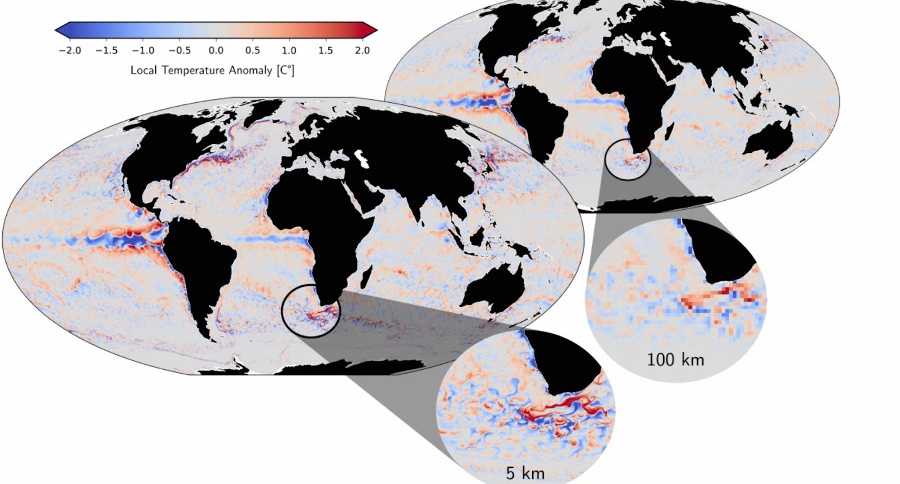High-resolution modeling

The Earth is a complex and interconnected system, with important processes occurring across a broad range of length-scales. From thousands of kilometers (e.g. ocean gyres), to tens of kilometers (e.g. atmospheric convection and ocean eddies), and even on the length-scale of meters (e.g. turbulence), each of these regimes must be represented in global climate and weather models. Present-day coupled models can only directly simulate the ocean to a resolution of 10s of kilometers, and instead rely on parameterisations to represent smaller features which strongly influence the climate system. Therefore, we are developing cutting-edge computational methods allowing us to peer into previously under-resolved scales of the coupled Earth system as small as 1 km. These models help us develop a better understanding of the climate-critical mesoscale processes within the Earth System.
Our group also utilises even higher-resolution local models, such as the Regional Ocean Modelling System (ROMS), to explore topics ranging from the impact of eddies on biological productivity (Gruber et al. 2011) to the interaction between mesoscale ocean phenomena and atmosphere (Byrne et al. 2016). We have also extensively studied these mesoscale phenomena in the past using satellite altimetry data; you can read about it here (links to climate dynamics research page and Ivy's papers).
Current research as part of the EERIE & EXCLAIM projects is utilising the ICON global coupled climate model at resolution reaching 1 kilometer. With these cutting-edge tools, we are working to identify the role of the ocean mesoscale in driving ocean extremes, explore the air–sea interactions associated with the mesoscales, and characterise mesoscale eddies in a detail that was previously not possible.
People involved:
Matthias Münnich
Aaron Wienkers
Emma Ferri
Stella Bērziņa
Key publications:
Gruber, N., Lachkar, Z., Frenzel, H., Marchesiello, P., Münnich, M., McWilliams, J. C., Nagai, T. & Plattner, G. K. (2011). Eddy-induced reduction of biological production in eastern boundary upwelling systems. Nature geoscience, 4(11), 787-792.
Byrne, D., Münnich, M., Frenger, I., & Gruber, N. (2016). Mesoscale atmosphere ocean coupling enhances the transfer of wind energy into the ocean. Nature communications, 7(1), ncomms11867.